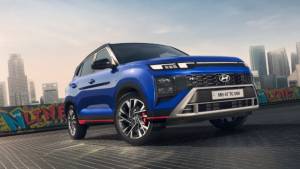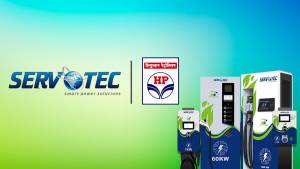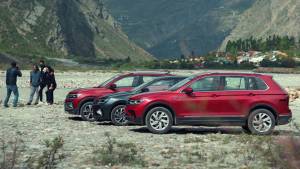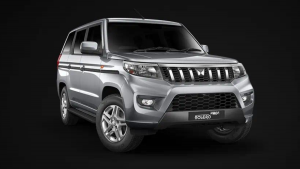Lion roars again
Team OD
Updated: May 09, 2013, 04:11 PM IST
The story is in the numbers. Thirty years ago, the mainstay of Peugeot's range was a rugged family saloon called the 504. In due course there was a new generation which, following the French company's naming convention, became the 505. That was eventually supplanted by two cars, the smaller 405 and the larger 605, so that Peugeot's 5-series disappeared. Until now. With the 508, Peugeot has gone full circle, introducing a single model in place of the 407 and 607, reflecting a change in the European market.
508 also represents a new start for Peugeot, which in a dash to increase sales of a smaller and cheaper models had lost some of its reputation for high quality, good handling cars. It is the first model to adopt a new Peugeot styling theme developed by Jean-Pierrre Ploue, the design overlord for both Peugeot and Citroen, and Peugeot brand styling chief Gilles Vidal. And it is likely to be the first car for Peugeot's return to India, following the Premier debacle in the 1990s.
You could also say that, at least for the mainstream models, the 508 is a return to conservatism, an attempt to get back to the 'near premium' position that Peugeot used to hold. Although it had bold frontal styling that wouldn't have looked out of place on a Ferrari or Maserati, the 407, its immediate predecessor, upset traditional Peugeot buyers and didn't attract many new ones. Peugeot was re-branded in January last year with the slogan 'Motion and Emotion' and the SR1 concept car showed its future design direction.
So the 508 is a neatly-styled 4.8m saloon, somewhat similar to the latest Volkswagen Passat. It is 10cm longer than the 407 but offers the same rear seat space as the 607, which was another 10 cm bigger. The 508SW estate wagon has a more sporty look, taking cues from the Audi Avant and BMW Touring. The re-styled Peugeot lion is still prominent but the name Peugeot is almost hidden where the bonnet overlaps the grille.
Actually the best part of Peugeot's up-grade is the quality of its car interiors. We had already seen that in the RCZ coupe and the 3008 and 5008 MPVs but the 508's cabin reaches a new level, with trim materials and fittings that are in the Audi class.
The instrument nacelle features paired speedometer and rev counter with classy white on black scales while the electronic display panel between them can also give a digital speed reading. The more expensive versions have a wide-screen colour display at the centre of the facia for navigation and other functions, controlled from a joystick behind the gearlever, and a head-up display for essential driving information which is presented (in colour) on a translucent polycarbonate panel behind the nacelle, rather than projected on to the windscreen. And, talking of windscreens, the 508SW can be had with a huge (1.6 sq m) panoramic glass roof which extends down to the screen â" unique in this class.
Although, like the 407, the 508 is based on the Peugeot Group's P3 platform it differs from its predecessor in having conventional MacPherson strut front suspension instead of double wishbones on all but the most powerful GT model. That saves weight (and money) and helps the bigger new car weigh in at 25kg less than an equivalent 407. Other weight reduction features are an aluminium bonnet and a magnesium cross-car beam behind the facia.
Following the current trend, Peugeot has downsized the engines for this latest model. The only petrol engine available is a 1.6 litre, with or without turbocharging, but in Europe the vast majority of cars in this class are diesels so there is a range of HDi engines - 1.6 litre producing 113PS, 2 litre with 142 and 165PS (which is most likely to come to India), and a 2.2 litre with 206PS which powers the GT. Most 2 litre models will be sold with six-speed automatic transmission, a new gearbox from Aisin of Japan (the GT is sold only as an automatic). Next year there will be a hybrid 508 at the top of the range, combining a diesel engine driving the front wheels with an electric motor at the rear and therefore bringing the added advantage of four-wheel drive.
The first thing to note about all the 508 diesels is that they are remarkably quiet. Since these engines are already used in a variety of Peugeot and Ford models which are not known for their refinement we must conclude that this has been achieved by careful attention to acoustic insulation and vibration damping.
Even in its lower-powered 113PS form, the 1.6 HDi gives the 508 adequate performance â" 0-100 kmph in 11.3 sec â" helped by 200 Nm torque. For the UK and some other markets that base vehicle taxation on CO2, this engine is used in a model called e-HDi coupled to a stop/start system and electronically-controlled manual gearbox (EGC). This combination achieves a CO2 figure of 109 g/km, the lowest figure in this class matched only by the VW Passat Blue Motion.
Unfortunately, the EGC lets it down, as the automatic gearshifts are jerky and it is impossible to make really smooth progress even if you change gear manually, using the paddles behind the steering wheel. This is a pity because Peugeot's stop-start system â" which uses a reversible alternator rather than the standard starter motor â" is the best in the business, gently but instantly restarting the engine as you come off the brake after a halt in traffic.

The 165PS 2 litre with the six-speed torque convertor automatic is an altogether better proposition and allows the driver to appreciate the well-sorted chassis. Surprisingly, the strut front suspension seems to work just as well as the wishbones on the GT but that may be because the 2 litre isn't potent enough to generate torque-steer. Whatever the reason, the steering is accurate, consistent and nicely weighted; Peugeot doesn't believe in electric power steering for a car of this type and size, so uses hydraulic assistance, with pressure from an electric pump.
The Ford Mondeo sets the standard for handling in this class and remains the car of choice for the enthusiastic driver. Peugeot had moved towards a Mondeo-like ride-handling compromise with the later 407s and continues that way with the 508. That means a stiffer set-up than the VW Passat and Opel Insignia, although the ride remains generally comfortable. For most people and situations it seems well-judged.
The 508 either comes with or can be ordered with most of the latest safety systems and devices, including electronic stability control (ESP) and cornering brake control (CBC), side-curtain airbags front and rear, and xenon directional headlamps that make use of the fog lamps for extra illumination at road junctions.
In Europe, the Peugeot 508 joins a fiercely-contested class of family and business cars that is gradually declining as buyers transfer to crossovers, smaller cars or lesser models from the premium manufacturers. The 508 rates highly among the top contenders â" the Ford Mondeo, Opel Insignia, and Skoda Superb â" while not actually taking a decisive lead.
Its success in India will depend on the price and specification decided on for this market and other manufacturers' developments. Interesting that Renault, Peugeot's French compatriot, is launching the Fluence just ahead of the 508. Superficially these cars look like rivals but actually the 508 is a cut above the Renault in size and appointments. Peugeot's answer to the Fluence is the as-yet unnamed new model for developing markets that will be supplied as CKD kits and built at the new factory, the location for which is still being finalised.
The 508 is an up-market car to create a good feeling for the brand's return to India.
Price (Ex-Delhi)
Starts Rs 31.99 Lakhs
Starts Rs 31.99 Lakhs
Displacement
1984cc
1984cc
Transmission
Automatic
Automatic
Max Power(ps)
190
190
Max Torque(Nm)
320
320
Mileage
15.10 Kmpl
15.10 Kmpl
Price (Ex-Delhi)
Starts Rs 30.2 Lakhs
Starts Rs 30.2 Lakhs
Displacement
1968cc
1968cc
Transmission
Automatic
Automatic
Max Power(ps)
177
177
Max Torque(Nm)
350
350
Mileage
17.42 Kmpl
17.42 Kmpl
Related Stories
Top Stories
Latest Videos
Most Popular
1
2
1
2
Network18 Updates
Compare














